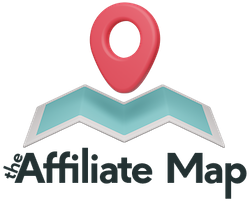Content Marketing for Beginners

How to Create a Content Marketing Strategy from Scratch
So you’ve heard about content marketing and how it can help your business grow, but you’re not quite sure where to start. Don’t worry, we’ve got you covered. In this article, we’ll walk you through the basics of creating a content marketing strategy from scratch.
First things first, let’s define what content marketing is. Content marketing is a strategic approach to creating and distributing valuable, relevant, and consistent content to attract and retain a clearly defined audience – and, ultimately, to drive profitable customer action. In simpler terms, it’s about creating content that your target audience finds valuable and using that content to build relationships with them.
The first step in creating a content marketing strategy is to define your goals. What do you want to achieve with your content marketing efforts? Do you want to increase brand awareness, generate leads, drive sales, or all of the above? Once you have a clear understanding of your goals, you can start to develop a plan to achieve them.
Next, you’ll need to identify your target audience. Who are you creating content for? What are their interests, pain points, and needs? Understanding your target audience is crucial to creating content that resonates with them and drives engagement.
Once you know who you’re creating content for, it’s time to brainstorm content ideas. What topics are relevant to your audience? What type of content do they prefer – blog posts, videos, infographics, podcasts? The key is to create content that provides value to your audience and helps them solve their problems.
After you’ve brainstormed content ideas, it’s time to create a content calendar. A content calendar is a schedule that outlines when and where you’ll publish your content. This will help you stay organized and ensure that you’re consistently delivering valuable content to your audience.
Now that you have a content calendar in place, it’s time to start creating your content. Make sure that your content is high-quality, engaging, and relevant to your audience. Don’t be afraid to experiment with different formats and types of content to see what resonates best with your audience.
Once you’ve created your content, it’s time to promote it. Share your content on social media, email newsletters, and other channels where your audience is active. Engage with your audience, respond to comments and feedback, and encourage them to share your content with their networks.
Finally, don’t forget to measure the success of your content marketing efforts. Track key metrics such as website traffic, engagement, leads generated, and sales. Use this data to evaluate the effectiveness of your content marketing strategy and make adjustments as needed.
Creating a content marketing strategy from scratch may seem daunting, but with the right approach and a clear plan in place, you can effectively reach and engage your target audience. Remember to stay consistent, provide value to your audience, and always be willing to adapt and evolve your strategy based on feedback and data. Good luck!
Understanding the Basics of SEO for Content Marketing
So you’ve heard about content marketing and how it can help your business grow, but you’re not quite sure where to start. Don’t worry, we’ve got you covered! In this article, we’ll break down the basics of SEO for content marketing, so you can start creating valuable and engaging content that will attract and retain customers.
First things first, let’s talk about what SEO actually is. SEO stands for search engine optimization, and it’s the process of optimizing your website and content to rank higher in search engine results. When your content ranks higher, it’s more likely to be seen by potential customers who are searching for information related to your business.
One of the key components of SEO is using relevant keywords in your content. Keywords are the words and phrases that people type into search engines when they’re looking for information. By including these keywords in your content, you can increase the chances of your content being found by search engines and, in turn, by potential customers.
But it’s not just about stuffing your content with keywords. Search engines are smart, and they can tell when content is written for them rather than for humans. That’s why it’s important to create high-quality, valuable content that is relevant to your audience. This will not only help you rank higher in search engine results but also keep your readers engaged and coming back for more.
Another important aspect of SEO for content marketing is creating a strong internal linking structure. Internal links are links that point to other pages on your website. By including internal links in your content, you can help search engines understand the structure of your website and how different pages are related to each other. This can improve your website’s overall SEO and make it easier for users to navigate your site.
In addition to internal linking, you should also focus on building external links to your content. External links are links from other websites that point to your content. When other websites link to your content, it signals to search engines that your content is valuable and authoritative. This can help improve your website’s SEO and increase your chances of ranking higher in search engine results.
When it comes to SEO for content marketing, it’s important to remember that it’s not a one-time effort. SEO is an ongoing process that requires constant monitoring and optimization. You should regularly review your content and make updates as needed to ensure that it remains relevant and valuable to your audience.
In conclusion, understanding the basics of SEO for content marketing is essential for creating content that attracts and retains customers. By using relevant keywords, creating a strong internal linking structure, and building external links to your content, you can improve your website’s SEO and increase your chances of ranking higher in search engine results. So what are you waiting for? Start optimizing your content today and watch your business grow!
Tips for Creating Engaging and Shareable Content for Your Audience
So you’ve decided to dip your toes into the world of content marketing. Congratulations! Creating engaging and shareable content for your audience is a great way to build brand awareness, drive traffic to your website, and ultimately increase sales. But where do you start? Don’t worry, we’ve got you covered with some tips for beginners to help you get started on the right foot.
First and foremost, it’s important to know your audience. Who are they? What are their interests, pain points, and needs? Understanding your target audience will help you create content that resonates with them and keeps them coming back for more. Take the time to research and gather insights about your audience through surveys, social media analytics, and customer feedback.
Once you have a good grasp of who your audience is, it’s time to brainstorm content ideas. Think about what topics are relevant to your audience and align with your brand’s values and goals. Consider creating a content calendar to plan out your content in advance and ensure a consistent posting schedule. This will help you stay organized and on track with your content marketing efforts.
When it comes to creating content, quality is key. Make sure your content is well-written, informative, and engaging. Use a mix of text, images, videos, and other multimedia elements to keep your audience interested and entertained. Don’t be afraid to show some personality and inject some humor into your content – after all, people are more likely to engage with content that feels authentic and relatable.
Another important aspect of content marketing is optimizing your content for search engines. This means using relevant keywords, meta tags, and other SEO best practices to help your content rank higher in search engine results. By making your content more discoverable, you’ll be able to reach a wider audience and drive more traffic to your website.
In addition to creating high-quality content, it’s also important to promote your content effectively. Share your content on social media, email newsletters, and other channels to reach a larger audience. Encourage your followers to like, comment, and share your content to increase its visibility and reach. Engage with your audience by responding to comments and messages, and foster a sense of community around your brand.
Finally, don’t forget to track and analyze the performance of your content. Use analytics tools to measure key metrics such as website traffic, engagement rates, and conversion rates. This will help you understand what types of content are resonating with your audience and what areas you can improve on. Use this data to refine your content marketing strategy and make informed decisions moving forward.
In conclusion, content marketing can be a powerful tool for building brand awareness and driving traffic to your website. By following these tips for beginners, you’ll be well on your way to creating engaging and shareable content that resonates with your audience. Remember to stay true to your brand’s values and goals, and always strive to provide value to your audience through your content. Happy creating!
